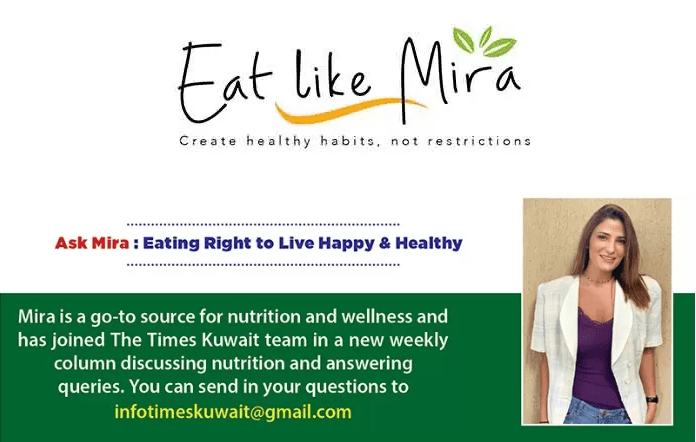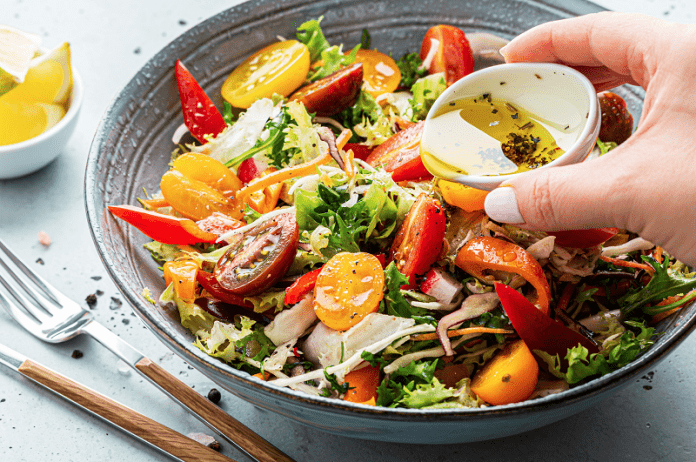Dressing food before serving is often considered to make the dish more tasty and appealing. Salads in particular are prone to dressing with the addition of a vinegar and oil base sauce ro which herbs and spices are added. Dressing also alludes to the variety of seasoned ingredients such as bread cubes, eggs, nuts, dried fruits, sausage bits, and herbs that are often prepared as a side dish to be served with meat, poultry, fish, or seafood.
But should you really be adding all those extra calories that end up adding extra kilograms to your weight? If you are planning to lose or to maintain your weight, remember that the dressing that you add to foods also adds to your weight.
Some food groups are considered extremely healthy and essential for you, and when dressing these foods with additional ingredients, you end up adding fatty items that minus the health aspect of the food.
For instance, salads are known to be healthy, light and rich in vitamins, but only if you are using the right kind of dressing. Two cups of shredded lettuce have only 20 calories, 0 fat and 8 mg of sodium. But, when you add 2 tablespoons of any creamy dressing to it your salad will end up having 150 calories, 15 g of fat and more than 300 mg of sodium.
Instead, here are a few lighter dressing options that you can use, guilt- free.
In salads: Replace normal dressings with:
2 tbsp of lemon and mustard (Adds only 2 calories and o fat)
2 tbsp of skim yogurt mixed with garlic (Adds 40 calories and 3 g of fat)
1 tbsp of balsamic vinegar mixed with lemon juice (Adds 30 calories and 3 g of fat)
1 tbsp of lemon juice plus 1 tsp of olive oil with salt and pepper (Adds 45 calories and 5 g of fat)
In baked potato: A baked potato is tasty and healthy when served with other meals, but only as long as you are eating just the potato. One large potato has 160 calories, 0 fat and 8 mg of sodium. However, when you add 1 tablespoon of sour cream for example to it, you end up eating 230 calories, 5 g of fat and more than 200 mg of sodium.
Instead, replace the sour cream dressing with:
2 slices of light cheese topped on the potato (Adds 35 calories and 2 g of fat)
2 teaspoons of light labneh topped on the potato (Adds 35 calories and 2 g of fat)
Popcorn: Air-popped popcorn is really nutritious and rich in fiber. Three cups of air-popped popcorn have only 100 calories, 1 g of fat and 2 mg of sodium. But instead when you pop the popcorn using oil or in the microwave, it doubles the number of calories and fat consumed.
For instance, eating the same quantity (3 cups) microwavable popcorn with butter flavor will lead to the consumption of 300 calories, 30 g of fat and more than 350 mg of sodium.
If using the microwave then go for the light microwavable popcorn that says 95 percent fat free. It is light, low in calories and almost fat free. Better yet, go for the air-popped variety of popcorn, which is healthier and with no extra artificial flavors.
Pasta: If you choose whole grain pastas, you are obviously attempting to be smart and healthy. But if you then add up coating your pasta with heavy sauces, you ruin the whole health aspect of the pasta.
A cup of whole wheat pasta has 160 calories, 1 g of fat and 3 mg of sodium. However when you add just two tablespoons of full fat creamy white sauce, you end up having 300 calories, 12 g of fat and more than 350 mg of sodium.
Instead replace the white sauce with a healthier tomato sauce. But if you are a die-hard fan of white sauces such as béchamel, then it is better to prepare your own at home. In that way you will know the exact ingredients you are using. Instead of using calorie-rich ingredients go for skim milk, or light cheeses such as parmesan, or low-fat cream.
Only you who can decide about the healthy food choices you need to make. A;so, a healthier choice does not imply foregoing all treats, just keep it in moderation.


















